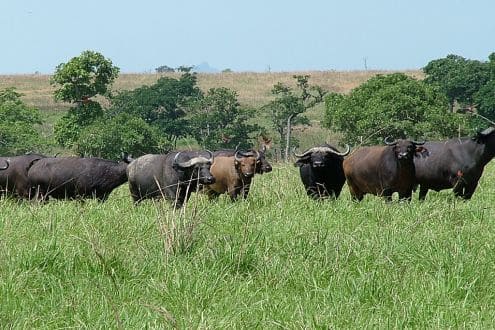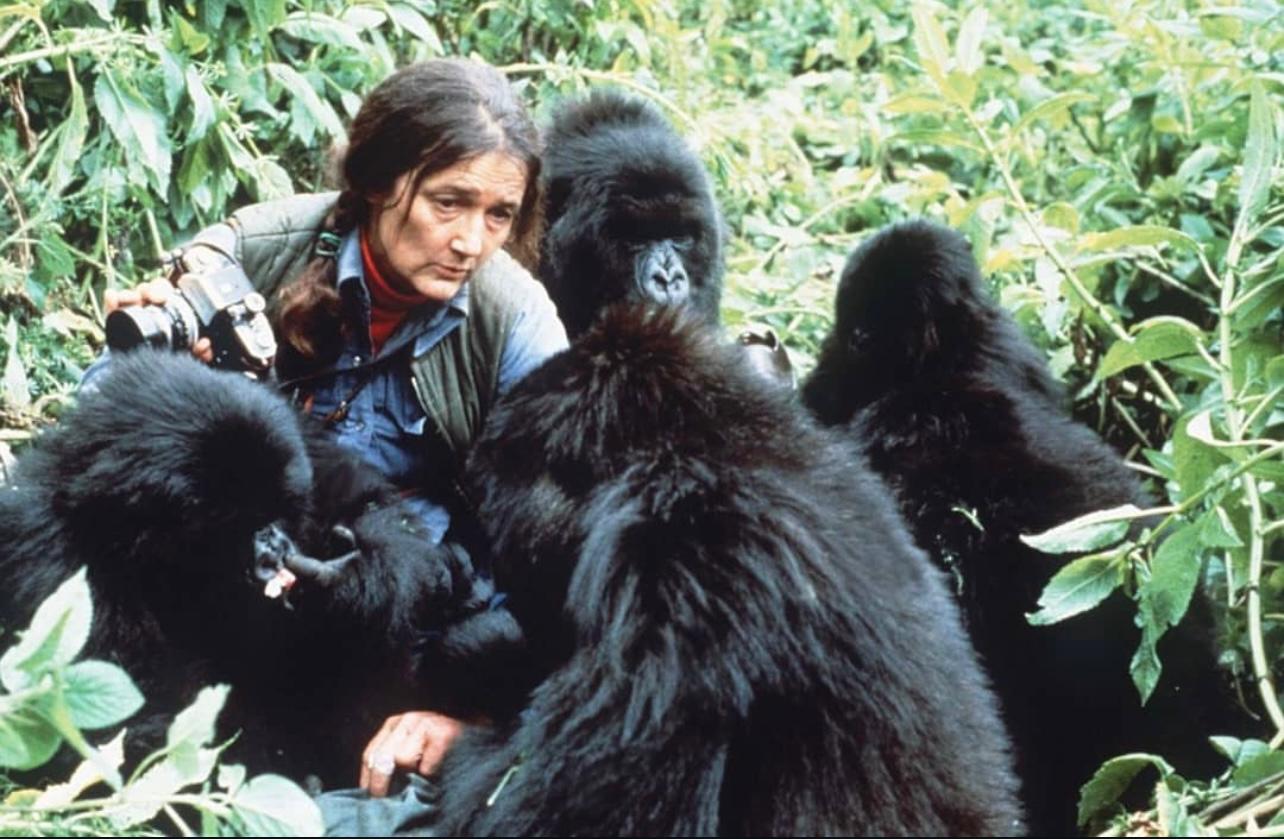Welcome to Garamba National Park
Garamba National Park spans 5,133 km2, with 9,663 km2 of adjacent domaines de chasse, and is situated in the north-eastern Democratic Republic of Congo (DRC) bordering South Sudan. It is one of Africa’s oldest national parks, designated in 1938, and in 1980 was declared a World Heritage Site. But this critically important landscape has had a tragic past and is often referred to as ground zero in the elephant poaching wars in Africa.
Once home to 22,000 elephants as recently as the 1970s, militarised poachers reduced the population to fewer than 1,200 today; and the northern white rhinos were poached to local extinction in the early 2000s. These highly incentivised poachers made up of South Sudanese armed groups, the Lords Resistance Army (LRA) and others, continue to target the region’s remaining elephants for the sale of their ivory to fund their criminal activities, wreaking havoc on people and wildlife as they go.
To stop the park’s destruction and bring stability to the area, African Parks signed an agreement in 2005 to manage Garamba with the Institut pour la Conservation de la Nature (ICCN). Since then the park has been one of our greatest challenges. But in 2016, we redefined Garamba’s history through the implementation of an extensive law enforcement strategy with support from critical donors. A heightened level of professionalism along with increased security measures was afforded to the Rangers, local staff and communities within the Garamba Complex. Since implementing this new strategy, surveys show a significant reduction of illegal activity in the park, elephant poaching has dropped by 90%, not one Ranger has been killed in action by armed poachers since 2017, and key wildlife populations, including Kordofan giraffe, have either stabilised or are increasing.
In a region with little economic opportunity, Garamba employs over 500 full-time local staff with 2,000 more on short-term contracts. Our growing ranger force provides security not only to wildlife but also to tens of thousands of people living around the park, slowly returning peace to this corner of the world again.
GARAMBA HIGHLIGHTS
- In January 2016 African Parks renewed its management agreement for Garamba for an additional 10 years.
- An effective law enforcement strategy that was devised in 2016 has resulted in a 90% decrease in elephant poaching in 2019 compared to previous years.
- To aid our anti-poaching efforts, six anti-poaching dogs, selected for their tracking capabilities, arrived in Garamba in 2019 and have since undergone intensive training with six rangers to aid our law enforcement team in the field.
- Protecting the park’s elephants is a top priority and by the end of 2019 a total of 45 elephants were collared with GPS/VHF devices, a critical tool in helping to protect this heavily targeted species in the park.
- The park’s 55 critically endangered Kordofan giraffe are the last remaining individuals in the DRC, and due to our efforts, their population has begun to stabilise and increase from 22 individuals in 2012.
- Garamba is one of the largest employers in the region with 514 full-time staff, 94% of which are DRC nationals, including law enforcement teams and dedicated community personnel.
- Our scholarship programme supports two local schools, benefitting over 700 students.
- In 2019, over 14,400 members of surrounding communities were provided with access to healthcare services through Garamba’s mobile health clinics and hospital.
FLORA AND FAUNA
With vast undulating grassland savannah and dense dry forest, Garamba is one of the oldest and most well-known national parks in Africa and home to the only notable elephant and giraffe populations in the region.
Flora
The southern part of the park is predominantly grassland savannah with scattered trees. Further north the vegetation is mainly mixed woodland, with dense, dry forests as well as riverine and swamp forests. In contrast, the hunting areas are predominantly dense bush savannah, mixed deciduous woodland and forests.
Fauna
With abundant food and water resources, Garamba provides excellent habitat for elephant, hippo, buffalo and Uganda kob, while less common species such as giraffe and roan antelope, although rare, can also be found.
Carnivores: The predator species that roam Garamba are notably spotted hyaena, leopard, lion, and serval amongst several smaller carnivores.
Primates: These include the Guereza colobus, Patas monkey, vervet monkey, the De Brazza’s monkey and the chimpanzee.
Other Species: Hippopotamus and Nile buffalo are the two most prolific species in Garamba. Other species found in the park includes red river hog, warthog, bushbuck, waterbuck, Ugandan kob, Lelwel’s hartebeest, roan antelope, sitatunga, bongo, blue duiker, yellow-backed duiker and oribi.
Avifauna
Bird diversity is high with more than 340 species recorded.
Spectacular colonies of carmine bee-eaters are common along the banks of the River Dungu and clouds of cattle egret can be seen circling over the large herds of buffalo.
Threatened Species
Prior to 2005 Garamba’s elephants were being poached at an alarming rate and the park was experiencing a negative population growth. However, by 2019 poaching had decreased by 90% and the population has since stabilised. In addition, the Kordofan giraffe subspecies is critically endangered, with only 48 remaining in the park and the entirety of the DRC.
Wildlife Monitoring
For a long time, research and monitoring in Garamba concentrated mainly on the population dynamics of the northern white rhino and, to a lesser extent, elephant and giraffe. However, these operations were halted in February 2005 when a previous project stopped operating in the park. As a result, what was known about the wildlife populations became increasingly outdated. Since then, Garamba has embarked on several monitoring programmes, fitting tracking devices to giraffe and elephant to learn more about their movements. In 2019, two elephants were successfully fitted with refurbished GPS tracking collars, taking the total number of elephants collared to 45. Several Kordofan giraffes have also been fitted with tracking devices. Their close monitoring enabled the team to record six new juveniles in 2018, a vitally important increase in this small population.
THREATS TO WILDLIFE IN GARAMBA NATIONAL PARK
It has been predicted that the northern white rhinos would soon be declared extinct due to high levels of poaching in Garamba National park. As civil unrest hindered conservation efforts, plans were developed to transition the rhino to havens in Kenya but were not implemented. The Congolese argued that outsiders should not be allowed to take away their symbol. Only four individuals were recorded in an aerial survey of the park in 2005 but they were presumed dead due to the civil unrest in the area.
The is surrounded by three vast adjacent hunting grounds, constituting an ecosystem of a sufficiently extensive area (1,242,700 ha). This is to support large populations of large mammals with their local seasonal migration routes. The hunting grounds contribute towards the effective protection of the property against the threats from the surrounding zone.
Getting around the park
Good luck. First, You must find a domestic flight to Aru, at which point they will have to switch to a charter prop plane for a 50 minute ride to Nagero, the launch point for expeditions into the park. It’s theoretically possible to travel by land from Aru to Nagero, but you would have to be crazy to try, both due to the impassibility of the roads and the safety.
Things to do in the park
In Garamba national park the topmost things to do include the wildlife game drive, Guided Nature walks and Community visits. Book Congo wildlife safari adventure to explore the great Garamba national park Congo with most experienced tour operators in Democratic republic of Congo and members of ATOAV RDC.
GARAMBA NATIONAL PARK LOCATION.
Garamba National park is in the North Eastern part of the Democratic Republic of Congo in the transition zone between the vast tropical forests of the Congo basin and the Guinea- Sudan savannas. The Park comprises one of the last worldwide population of the Northern white rhino, endemic-subspecies of Congolese giraffe and a mixed population of elephants, which include forest elephants, bush elephants. The park’s vast savanna, grasslands and woodlands, distributed with gallery forests along the river banks and the swampy depressions, are home to four large mammals: the elephant, giraffe, hippopotamus and above all the white rhinoceros.
WILDLIFE SAFARIS IN GARAMBA NATIONAL PARK
Garamba was home to the world’s last known wild population of northern white rhinos. It has suffered greatly from Congo’s decades-long civil war, with heavy poaching and 50,000 refugees fleeing from Sudan into the park. The last white rhinos were likely killed by poachers by 2008, and the species is expected to be announced extinct within the next few years.







